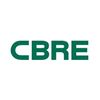How Much Do You Stand To Lose In 2009? | PKF Reports
In the March 2009 edition of Hotel HorizonsSM, PKF Hospitality Research (PKR-HR) forecast the U.S. lodging industry will suffer a 7.8 percent decline in occupancy and a 6.4 percent drop in ADR during 2009. The net result is a 13.7 percent decrease in RevPAR. While declining revenue is worrisome, ultimately it is the fall off in profits that hurt hotel owners and the financial community.
To simulate the potential impact of declining revenue on the profits of individual properties during the current (2009) industry recession, PKF-HR has taken a look back at lodging industry performance during the last major recession – 2001. From 2000 to 2001, 74.6 percent of all the properties that participated in our annual Trends in the Hotel Industry survey experienced a decline in RevPAR. A comparable percentage (74.9 percent) suffered a decline in profits.
The following chart summarizes the declines in performance experienced in 2001 by those hotels that suffered a decline in RevPAR.
Influential Factors
When analyzing the impact of revenue declines on hotel profitability, analysts need to be aware of those factors that impact the movement of revenues, expenses, and profits from one year to the next. Examples include the following:
- In general, RevPAR declines driven mostly by lower occupancy levels have less of a negative impact on profitability, compared to RevPAR declines driven by lower ADRs. The reduction in the number of rooms occupied causes a decline in the incremental costs associated with servicing these rooms and guests (i.e. staffing, utilities, guest supplies, etc.)
- The character of the revenue mix (i.e. room sales, food and beverage, etc.) at your hotel may differ from that of the comparable properties. Variation in outcomes may result.
- The local economic environment will impact movements in certain fixed charges more than changes in business volume. Examples of expenses that are less reactionary to changes in occupancy and revenue include utility costs, property taxes, and insurance.
- Terms of management contracts and franchise agreements may, or may not, cause fee payments to move in sync with changes in revenue.
Downside Benchmarker Reports
Given the prospects of weakening RevPAR for most hotel owners and operators, PKF-HR has produced a package of “Downside Benchmarker” reports. These reports provide guidance to lodging industry participants regarding the impact of declining revenue on profitability. The “Downside Benchmarker” package features a total of 20 different reports, each covering a different property type combined with a specific range of RevPAR decline (i.e. full-service hotels with a RevPAR decline of 10% to 15%).
The data contained in the “Downside Benchmarker” reports reflect the aggregate average performance of a same-store set of hotels that meet a subject property type category and fall within the designated range of RevPAR decline from 2000 to 2001. These reports are intended to provide the reader with a general sense of the changes in all revenue sources, expenses, and profits for the properties that fit these broad definitions.
To purchase the package of “Downside Benchmarker” reports for $295, please visit our website at .
Robert Mandelbaum
Director of Research Information Services
CBRE Hotels
